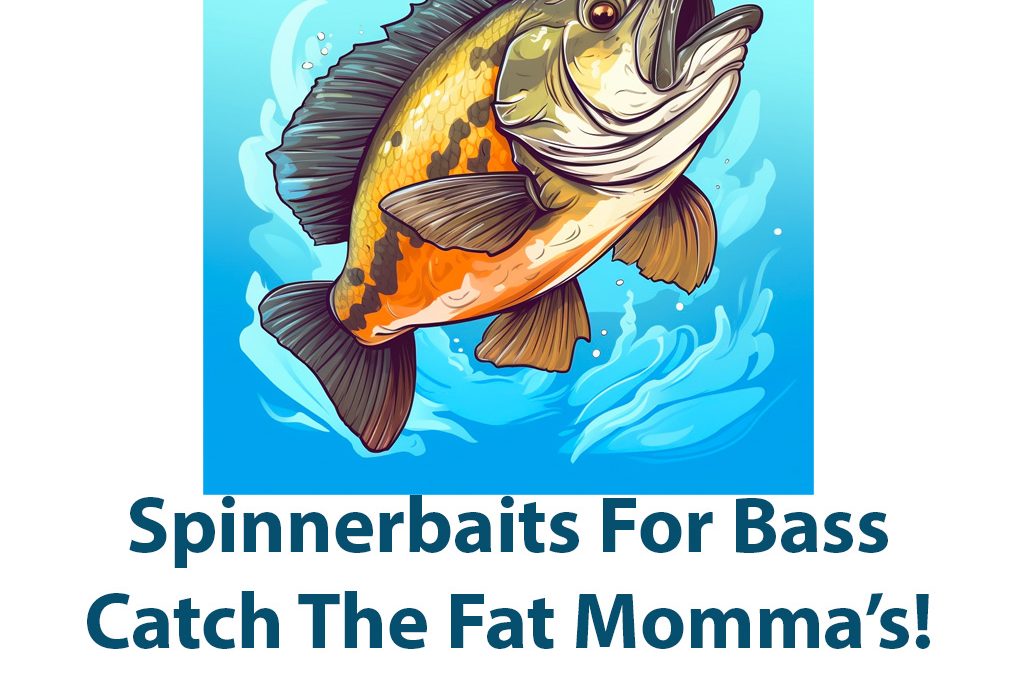Greetings, fellow fisherman. Today, I want to discuss the spinnerbait, which is a crucial piece of equipment for any bass fisherman. This article is for you if you want to expand your toolkit with a new technique or if you want to try spinnerbaits for the first time.
I can vouch for the adaptability and efficiency of spinnerbaits as an avid angler who has used them to land many bass over the years. I’ll describe the anatomy of spinnerbaits, go over several tactics for using them, give advice on how to pick the best spinnerbait for various situations, and discuss how to increase your success when fishing.
Let’s start by discussing the fundamentals of spinnerbaits.
Anatomy of a Spinnerbait
Let’s first talk about how spinnerbaits appear and are made before we describe how to use them. The four main parts of a spinnerbait are normally a hook, a head, a skirt, and one or more blades.
Of course, the portion of the bait that attracts fish is the hook. The blade(s) attach to the bait at the head, which is frequently designed like a jighead. The dress is
the feathery element that rests above the hook and gives the bait movement and flare. The blade(s), which are the rotating metal parts that produce vibrations and flash to attract fish, are the final component.
Blade Types and When To Use Them
Quick Intro On Blades
There are numerous different blade kinds, and each has a distinct function. Colorado, Indiana, and Willow blade varieties are the most popular. Colorado blades vibrate a lot and travel slowly since they are circular and have a large profile. They work well in murky or dimly lit environments where fish use their sense of vibration to find prey. Colorado blades resemble Indiana blades, although Indiana blades are more oblong in shape with a wider top than bottom. These blades are suitable for slightly cleaner water conditions and provide a more moderate vibration than Colorado blades. On the other hand, willow blades are long and thin, producing more flash and less vibration. In clear water or when fish are more likely to be drawn in by sight than by vibration, these blades work best.
Colorado Blades
Let’s start by talking about Colorado blades. These blades have an oval form with a slight bend. They are more suited for slow retrieves since they are typically wider and have more surface area than other blade varieties. They generate a lot of vibration and thump in the water, which may draw in fish that are hiding out or not actively feeding.
In my experience, Colorado blades perform best in stained or muddy water because the added vibration makes it easier for fish to locate your bait. They also work well at imitating bigger baitfish like shad or bluegill. I like to retrieve my spinnerbait slowly while using Colorado blades, bumping it along the bottom or through any cover to make as much noise as I can. Colorado blades may not be as successful if you’re fishing in clear water or during the height of the day when the sun is high since those conditions can make their size and vibration too much for fish to handle.
Willowleaf Blades
Willowleaf blades come next. These blades are longer and more slender than Colorado blades, with a more noticeable curve. They are more streamlined and better suited for quicker retrieves because they are narrower and have less surface area. They produce a great deal of flash in the water, which can draw in fish from a distance.
In clear or hardly discolored water, where their flash can be seen from a distance, I find that Willowleaf blades perform best. They work well at mimicking smaller baitfish, such shiners or minnows. I like to swiftly retrieve my spinnerbait while using Willowleaf blades, either by burning it just below the surface or by reeling it in as soon as I can. Willowleaf blades may not be as effective if you’re fishing in murky water or in dim lighting because their flash is less noticeable in those circumstances.
Indiana Blade
The Indiana blade is a different kind of blade that merits discussion. These blades resemble Willowleaf blades in design but differ in that they have a more gradual curve and a bigger body. They provide more vibration than Willowleaf blades but less than Colorado blades, making them a nice middle ground alternative. They are suitable for both clear and murky water because they still produce a decent amount of flash.
When fish are holding in deeper water or when the water is cooler, I find that Indiana blades perform best. They can mimic a wide range of baitfish, including smelt, suckers, and trout. I prefer to retrieve my spinnerbait with Indiana blades at a medium speed, alternating between fast bursts and sluggish creeps to produce a genuine presentation. Indiana blades may not be as helpful if you’re fishing in shallow water or in hot weather because their slower vibration can be muffled by other variables.
Hybrid Blade
The hybrid blade made from Willowleaf and Colorado is the last one. The best of both worlds is provided by these blades, which combine the best qualities of Colorado and Willowleaf blades. They are an adaptable choice for any circumstance because they have the vibration of Colorado blades and the flash of Willowleaf blades.
Colorado-Willowleaf hybrid blades, in my experience, perform best when the fish are finicky or when you’re unsure of the best kind of blade to use. They can mimic a variety of baitfish and stir up quite a stir in the water. I prefer to retrieve my spinnerbait with Colorado-Willowleaf hybrid blades at a medium speed, occasionally changing the retrieve to keep fish engaged. Colorado-Willowleaf hybrid blades may not be as successful if you’re fishing in dense cover or deep water because their size and increased movement can lead to tangling or visibility problems.
Blade Conclusion
In conclusion, the type of blade you use on your spinnerbait can have a huge impact on how successful you are at catching bass. Indiana blades give a happy medium for deeper/cooler water, Colorado-Willowleaf hybrid blades are adaptable for any circumstance, and Colorado blades are ideal for sluggish retrieves in muddy water. Willowleaf blades excel in clear water for fast retrieves. For the sustainability of the fishery, always observe local fishing restrictions and practice catch and release. Experiment with various blade kinds and tactics to find what works best for you.
Skirt Materials and Colors
I’ve discovered that a spinnerbait’s skirt material and color selection can have a significant impact on the number of fish it attracts. It might be difficult to know where to begin with so many options on the market. We’ll explore the many spinnerbait skirt material and color possibilities in this post, along with advice on how to pick the best one for your individual fishing situation.
One of my go-to lures for bass fishing is the spinnerbait. A fish’s predatory instincts may be aroused by the realistic movement that the spinning blade and skirt produce in the water. To produce a realistic, natural-looking movement in the water, the proper skirt material must be chosen.
The silicone, rubber, and living rubber are the three skirt materials that are most frequently utilized for spinnerbaits. Although each of these materials has benefits and drawbacks, they all serve the same purpose—giving the lure movement and lifelike action.
Silicone Skirts
The most preferred choice for spinnerbait skirts is silicone because of its strength, flexibility, and lifelike movement. They may maintain their shape even after repeated use and come in a range of colors. They are adaptable for any fishing situation and may be utilized in both clear and murky water circumstances. The silicone’s flexibility also enables a natural movement in the water, which can awaken a fish’s urge for predation. The restricted color selection of silicone skirts makes it challenging to match the hatch or come up with unique color combinations.
Rubber Skirts
Another well-liked option for spinnerbait skirts is rubber. They can be cut to produce a more distinctive silhouette, and they offer a natural flow in the water. Rubber skirts have a lifelike appearance that can be useful in luring fish to bite, albeit they are less resilient than silicone skirts. Rubber skirts are available in a variety of colors, though less than silicone, which can make it challenging to match the hatch or create unique color combinations.
Although living rubber skirts are the priciest option for spinnerbaits, they provide a realistic movement and natural feel that can be challenging to recreate with other materials. The additional benefit of living rubber is that it can be colored to match any decor. This enables fishermen to design extremely intricate color patterns that closely resemble particular prey species. Although silicone or rubber have a longer lifespan than living rubber skirts, a fishing lure’s lifespan can be increased with the right handling and upkeep.
The Right Color
Just as crucial as picking the proper material is picking the right skirt color. In various types of water, a spinnerbait skirt’s color can dramatically alter its ability to draw in fish. You can pick a color from one of three primary categories: natural colours, strong and vivid hues, or soft and muted tones.
Natural tones offer hues that resemble the local prey’s native colors. In clear water or when you want to make a presentation that looks natural, green pumpkin, watermelon, brown, and other related colors might be useful. These hues can be productive whether fishing in open water or close to cover.
Dirty Water
In dirty or muddy water conditions, bold and vivid hues provide high-contrast colors. When visibility is poor, colors like chartreuse, firetiger, bright pink, and others that pop out in the water can draw a fish’s attention. When trying to produce a high contrast presentation or when fishing in murky water, these colors can be useful.
Colors that are more muted and natural-looking can be better for pressured bass or clearer water. Smoke, shad, bluegill, and other colors that look similar can work well in waters that are under more stress or when you want to make a presentation that is more subdued and realistic. When fishing in clear water or when you wish to make a more subdued presentation, these colors can be useful.
It can be difficult to pick the proper color for your spinnerbait. When making a choice, it’s crucial to take into account factors such as the visibility and clarity of the water, the time of day, the weather, and the local prey species. Try out various colors to find which ones suit you best in various situations.
In conclusion, choosing the correct skirt material and color will greatly improve your spinnerbait’s ability to catch fish. Your chances of success on the water can be improved by being informed of your alternatives and making good decisions. Think about a skirt’s durability, elasticity, and realistic movement when selecting a material. When selecting a skirt color, take into account the surrounding prey species, weather, time of day, and water clarity and visibility. Your spinnerbait can become a very potent tool in your fishing armory by choosing the correct material and color combination.
Importance of Hook Size
The size and location of the hook are two of the most important elements to consider when selecting a spinnerbait. Hooks exist in a range of sizes, from very small (7/0 or above) to very large (No. 6). The size of the fish you’re pursuing and the kind of spinnerbait you’re using will determine which size is best. In general, smaller spinnerbaits will need smaller hooks, whereas larger spinnerbaits with more enormous skirts and blades will need larger hooks.
Techniques for Using Spinnerbaits
Cast and Retrieve Technique
The most popular method involves launching your spinnerbait, letting it float down, and then swiftly reeling it back in. When fish are actively feeding or the water is clear, this strategy is effective. Change the depth and pace of your retrieve to more closely resemble a fish’s natural motion in order to maximize your chances of luring in fish.
Slow-Rolling Technique
In this method, which is identical to the cast and retrieve method, you will reel in your spinnerbait more slowly as opposed to swiftly. When the water is colder or the fish are less alert and energetic, this technique is effective.
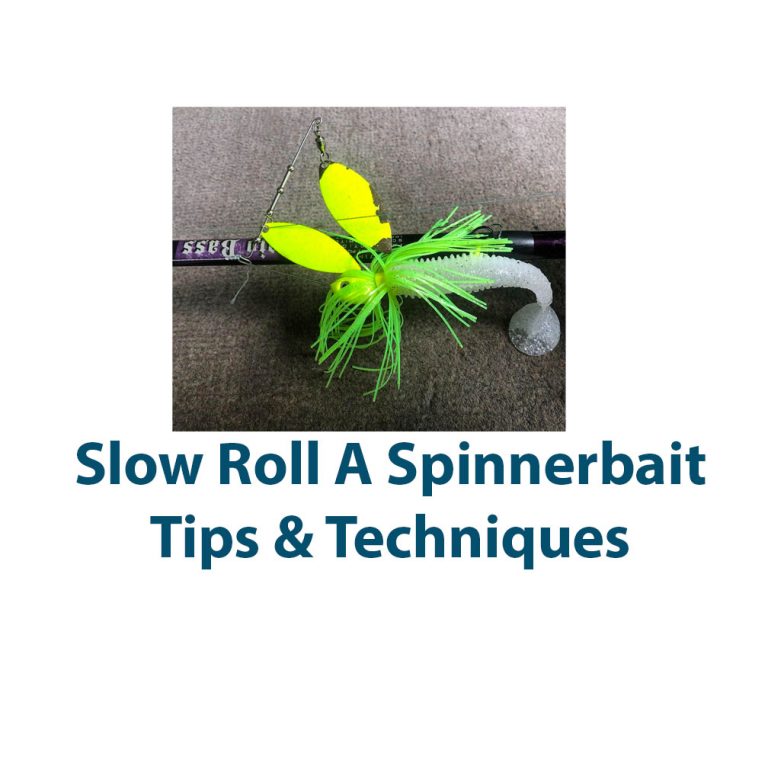
Slow Rolling A Spinnerbait
Slow Rolling A Spinnerbait: A Comprehensive Guide I enjoy fishing a lot, and I’ve experimented with a variety of methods and equipment to get the best catches. Slow rolling a spinnerbait is a method that has regularly worked for me. Using this method, the bait is brought up slowly and steadily so that it can […]
Burning Technique
The burning technique entails quickly reeling in your spinnerbait. This technique, which stirs up the water a lot, works best in shallow water or while fish are pursuing prey.
Jigging Technique
Cast your spinnerbait out and then lower the rod tip so that the bait sinks to the bottom to use the jigging technique. Create an up-and-down motion with your rod tip to quickly elevate and lower it and entice fish.
Drifting Technique
By letting your spinnerbait drift naturally in the water while the boat drifts, you can catch fish. When fishing in currents or down streams, where the bait will naturally travel with the flow of the water, this method is helpful.
Choosing the Right Spinnerbait
Considerations like the size of the fish you’re pursuing and the state of the water should be made while choosing the best spinnerbait.
Matching Spinnerbait to Water Conditions
Choose spinnerbaits with Colorado or Indiana blades for fishing in cloudy water. On the other hand, to make a more subdued presentation when fishing in clear water, stick to willow blades.
Choosing Spinnerbait Size Based on Bass Size
If you’re targeting larger bass, use a spinnerbait with a larger profile, more oversized blades, and a more substantial skirt. For smaller fish, stick to a smaller spinnerbait with smaller blades and a smaller profile.
Determining Blade Type Based on Water Clarity and Light Conditions
The color of the blades you select should depend on the conditions as well. In low light conditions or murky water, select a spinnerbait with brightly colored blades. In contrast, use a spinnerbait with a natural blade color in clear water or on bright sunny days.
Advantages of Using Spinnerbaits
One of the most significant advantages of using spinnerbaits is their overall versatility. They can be used in a wide range of water conditions, and anglers can use them to target various species of fish.
Another advantage of using spinnerbaits is their ability to attract fish even in murky water. The vibrations and flash created by the blades can cut through the low light and muddy water, attracting even the most finicky fish.
Maximizing Success with Spinnerbaits
Now that we’ve covered the basics of spinnerbaits let’s finish off with some tips and tricks to help you maximize your success on the water.
Pay Attention to Wind and Current Conditions
Wind and current can impact both the movement of your bait and your ability to cast. Take these variables into consideration when selecting your spinnerbait and adjusting your techniques.
Vary Your Retrieve Speed and Depth
Fish are often attracted to the movement of a bait in the water. Varying your retrieve speed, depth, or combining techniques can make your spinnerbait mimic a fish’s natural movement, increasing the chances of attracting fish.
Experiment with Different Colors and Blade Types
Different color skirts and blades can have a tremendous impact on your ability to attract fish. Don’t be afraid to experiment with different colors and blade types to find the combination that works best.
Try Different Trailer Hooks for Added Effectiveness
Adding a trailer hook to your spinnerbait can increase your chances of hooking fish. This technique is especially effective in situations where fish are short-striking or not fully committed to biting the bait.
Fishing Spinnerbaits In Each Season
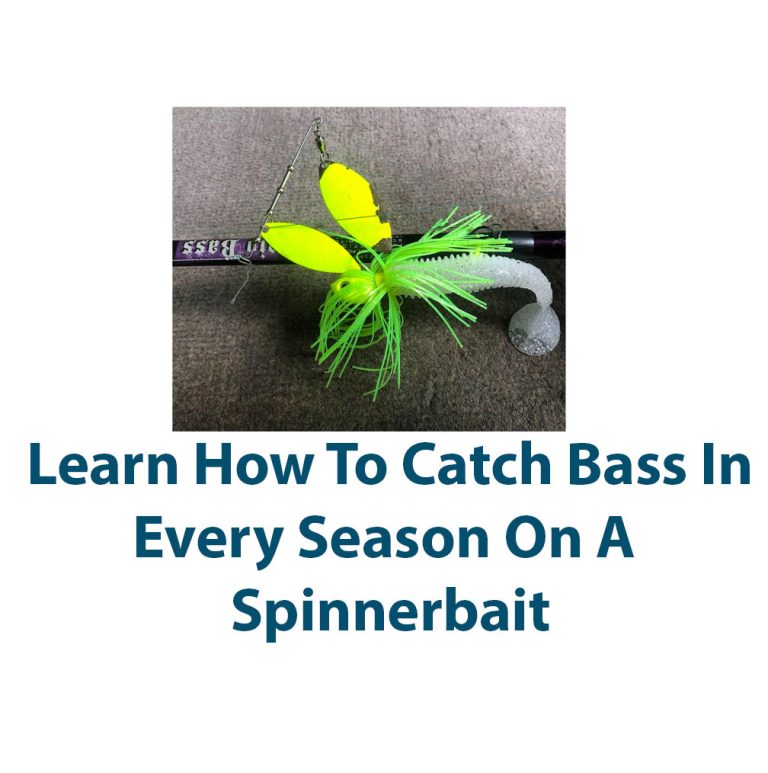
Catch Bass In All Seasons On A Spinnerbait
Introduction Hello and welcome to my tutorial on using spinnerbaits to capture bass throughout the year. I’ve spent countless hours as an avid angler honing my skills and discovering new strategies to capture more fish. Since I can remember, spinnerbaits have been a mainstay in my tackle box, and for good reason. They are adaptable […]
Conclusion
In conclusion, a spinnerbait is a crucial piece of equipment for any angler. Your success on the lake can be greatly impacted by your knowledge of their anatomy, various usage methods, and how to pick the best spinnerbait for each situation. Furthermore, being open to exploration and experimentation with your spinnerbaits can aid in the development of a repertoire of strategies, hues, and blade combinations that are most effective for you.
Spinnerbaits are a great way to catch more fish and diverge from conventional fishing lures and methods, regardless of your level of experience. Give spinnerbaits a try the next time you’re out bass fishing; who knows, they might end up becoming your go-to lure for landing large fish!
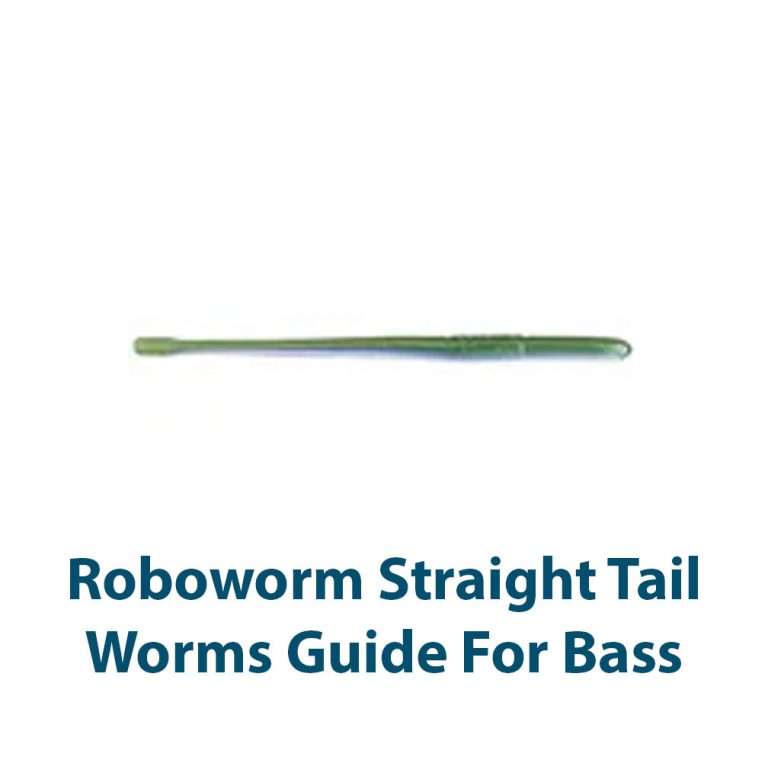
Roboworm Straight Tail Worm Guide For Bass
Introduction I couldn’t help but feel puzzled as I sat at the edge of the pier. Even after using a variety of lures and approaches, I had fished for hours without any success. Although the water was calm and clear, the fish didn’t seem to be anywhere to be found. My friend Bob arrived in […]
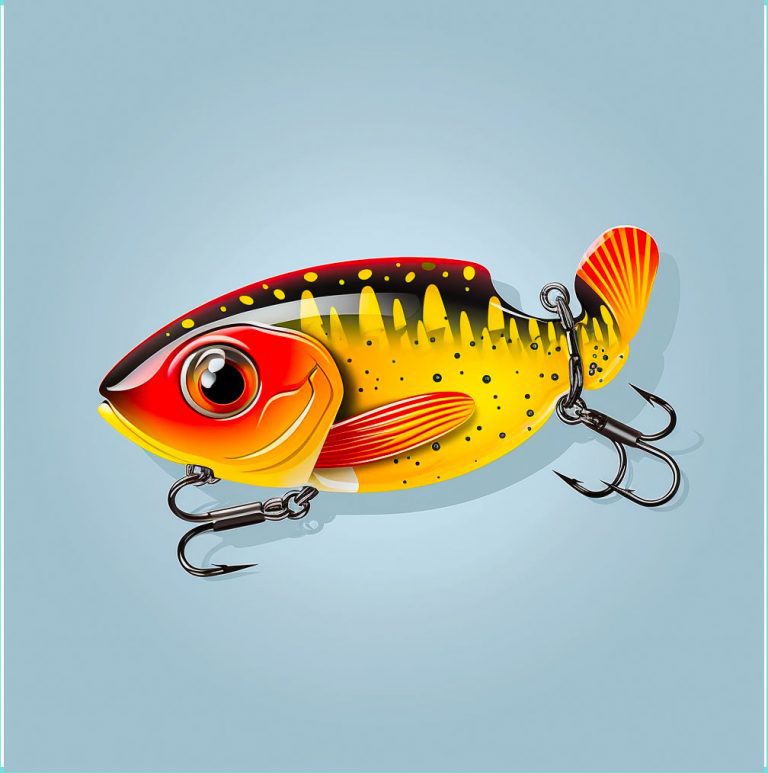
Lipless Crankbaits for Bass: Find Bass Fast
Introduction This article is going to look at fishing lipless crankbaits for bass. Fishing can be a rewarding and relaxing pastime, but let’s face it, catching fish is the main goal. Bass fishing, in particular, can be a challenge. You need to find where the fish are hiding, and then convince them to bite. And […]
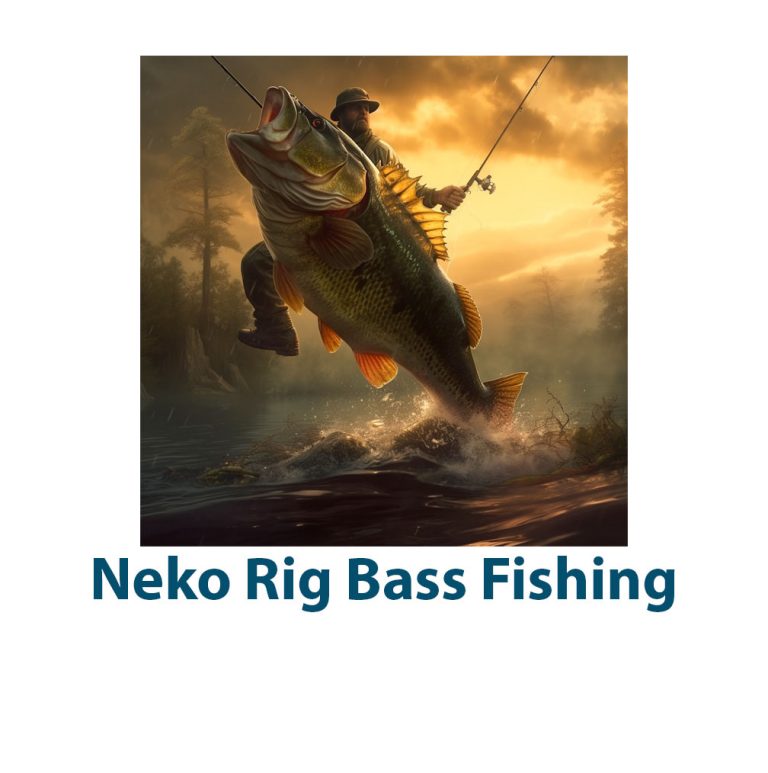
Catch Largemouth, Smallmouth and Spotted Bass With Neko Rigs
Introduction Are you tired of casting your fishing line for hours without catching anything? Have you ever heard of the Neko Rig? This unique technique is a game-changer in the world of fishing. Not only is it perfect for catching large and smallmouth bass, but it’s also amazing for nabbing spotted bass. Join me as […]
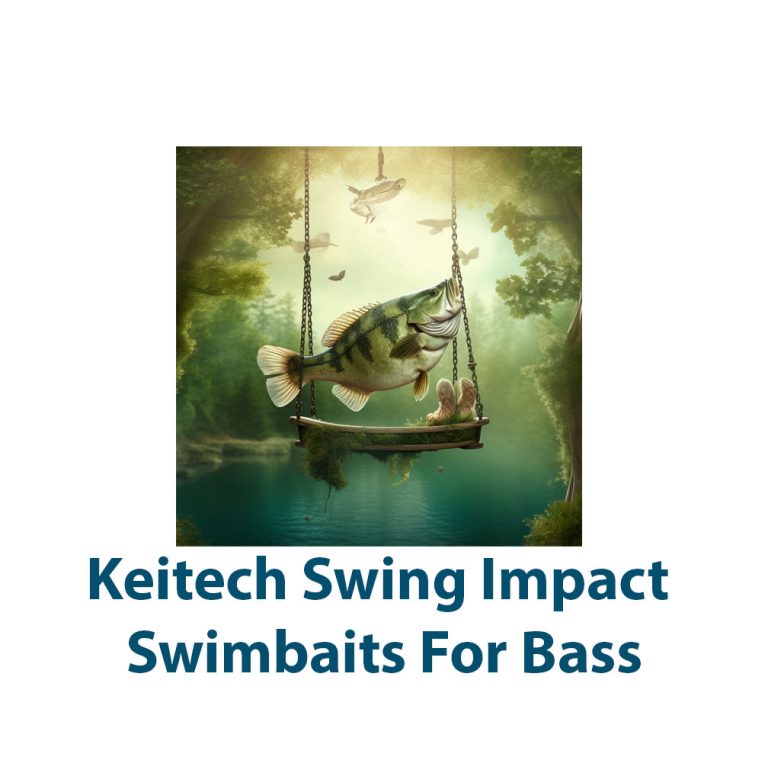
Keitech Swing Impact Swimbaits for Bass
Introduction Hey there anglers! If you’re in the market for some new swimbaits for bass fishing, I highly recommend checking out Keitech Swing Impact Swimbaits. They’re a favorite among many fishermen, including myself, and for good reason. In this article, we’ll dive into the science behind these lures, the different types available, techniques for using […]

Chatterbaits In Every Season For Bass
When it comes to bass fishing, we all know that having the right gear and techniques can make a huge difference in your success. That’s where chatterbaits come in. These versatile lures are effective in all seasons, from winter to fall. But how do you know which ones to use and when? As an avid […]
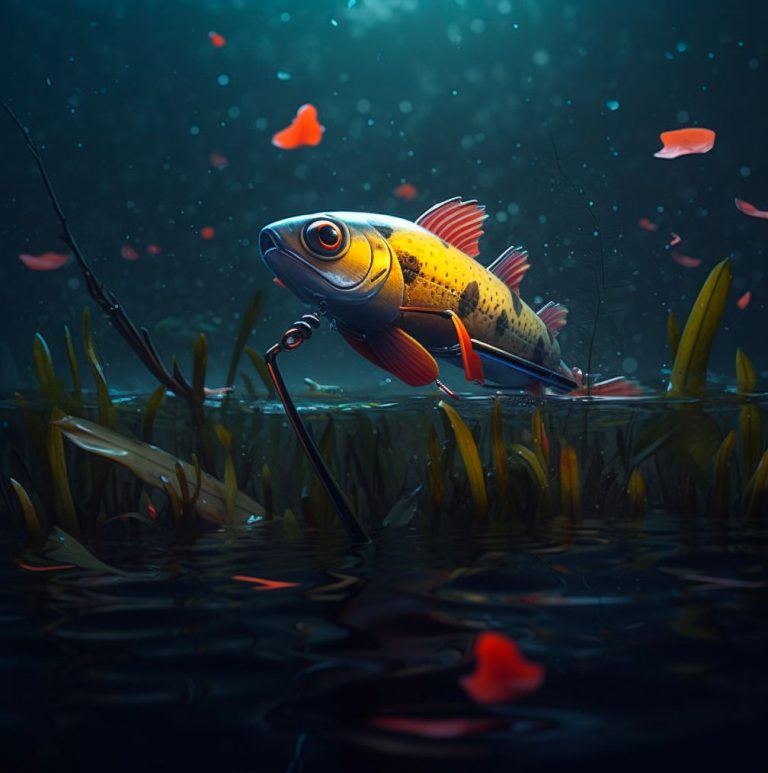
Whopper Plopper Fishing For Bass
Introduction As a seasoned angler I’ve always enjoyed fishing, especially for bass. I’ve tried various bait and lures over the years, but nothing has captivated my attention more than the Whopper Plopper. It’s a unique fishing technique that has taken the fishing world by storm. From its inception to the way it can help you […]

